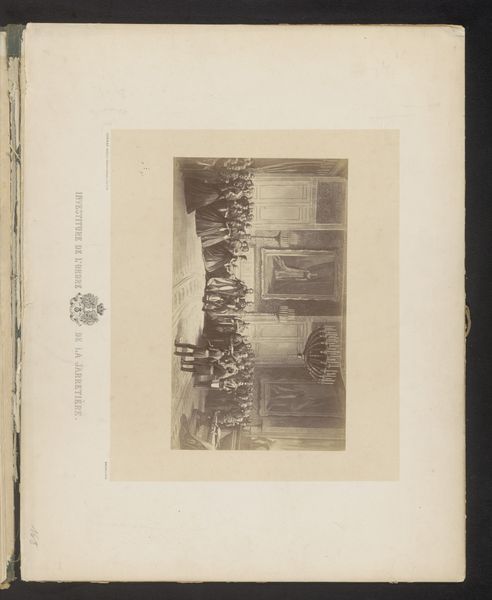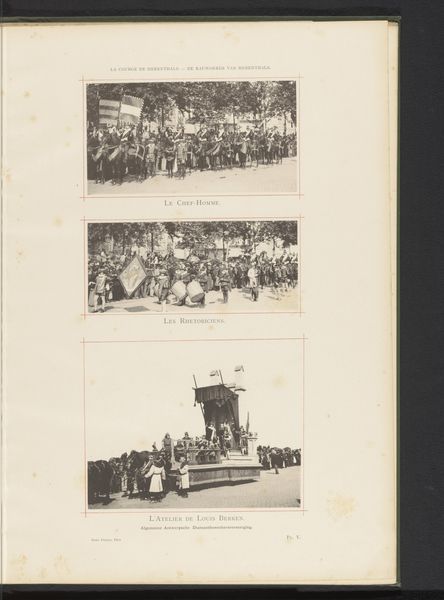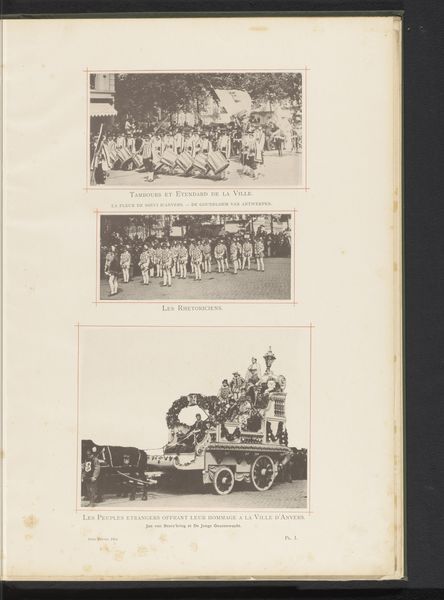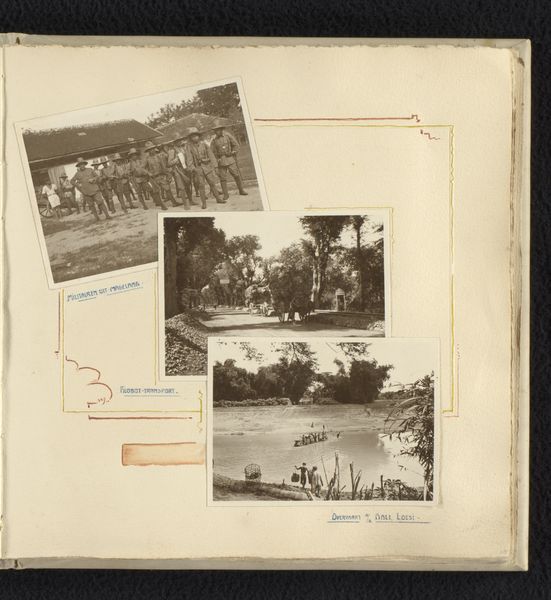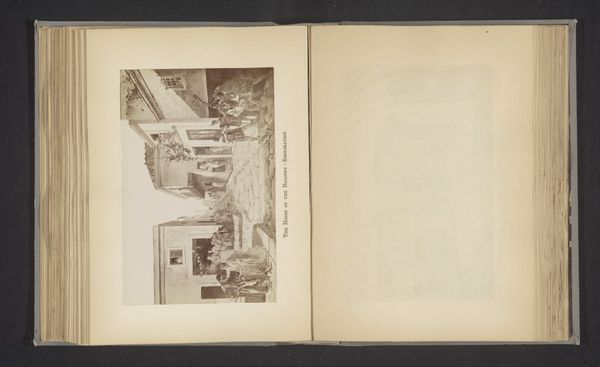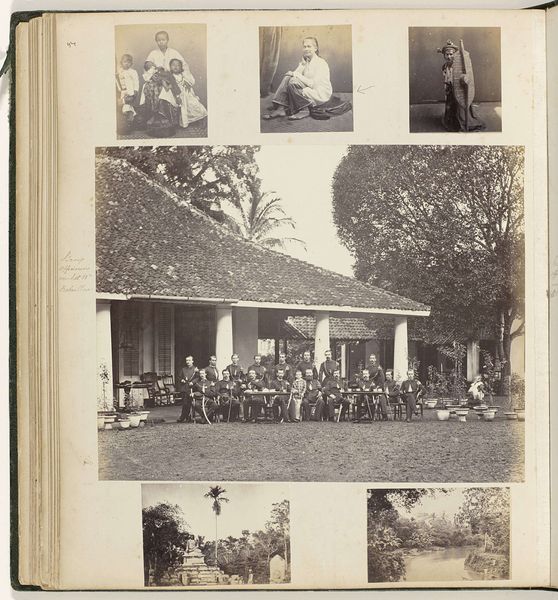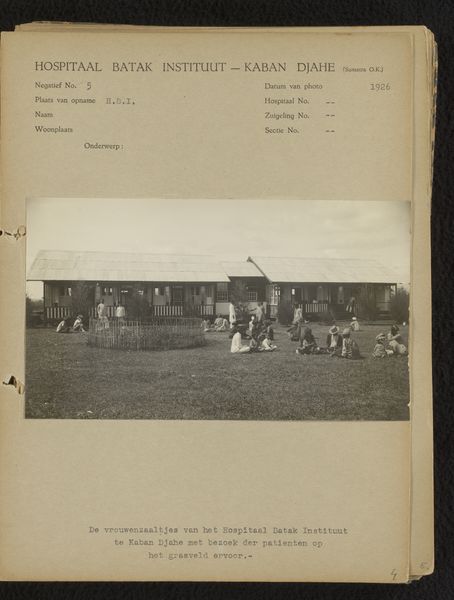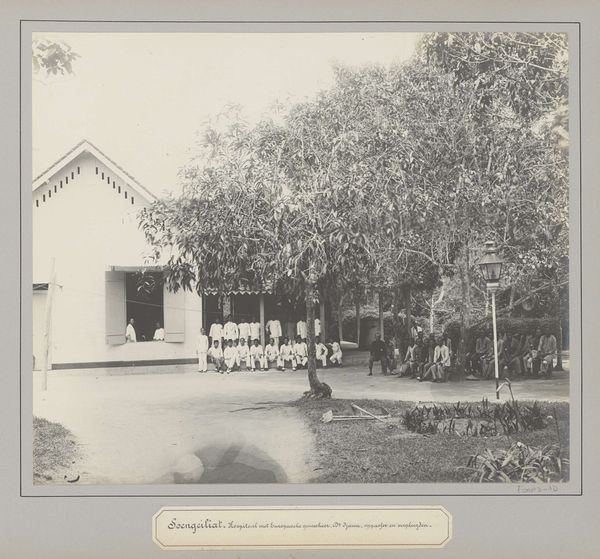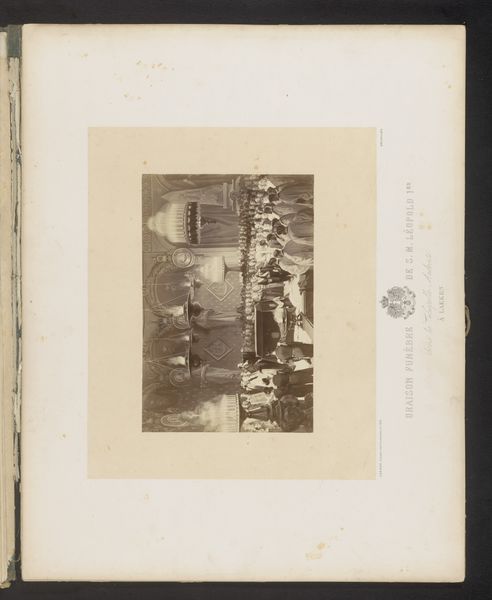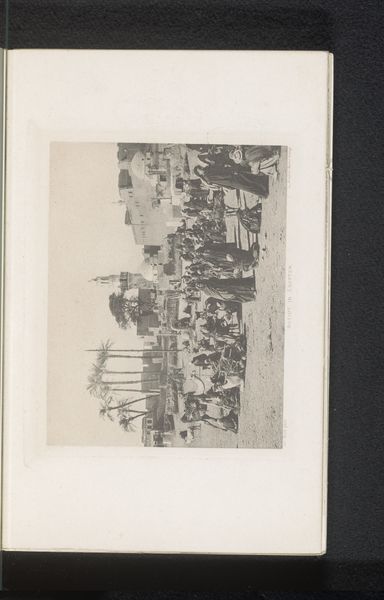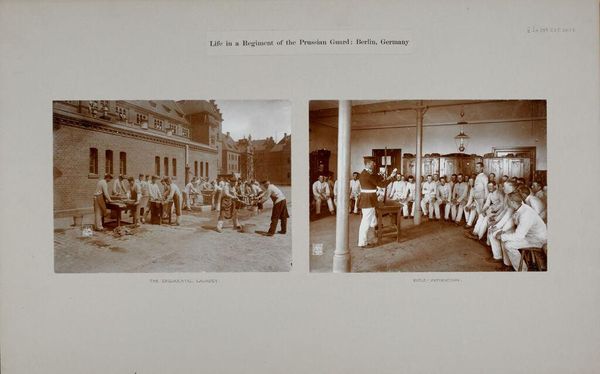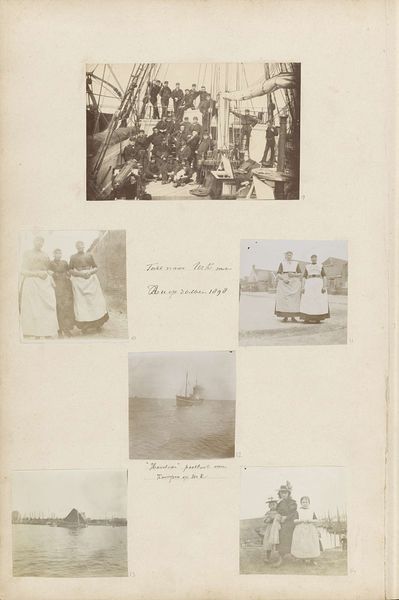
albumen-print, photography, albumen-print
#
albumen-print
#
photography
#
albumen-print
Dimensions: height 81 mm, width 112 mm
Copyright: Rijks Museum: Open Domain
Editor: This is "Marrons," an albumen print dating from around 1900 to 1905. It's a photograph of two different scenes, both showing groups of people outside what looks like wooden structures. I’m immediately struck by the composition – the stark architectural lines versus the softness of the figures. How would you interpret the interplay of these forms? Curator: It is interesting that you bring up the architecture. Note how the geometry of the buildings contrasts so sharply with the organic arrangement of figures in the foreground of each frame. Consider the lines that define the architecture and direct our vision through the planes of each individual frame; how the photographer positions figures in deliberate disarray; what purpose does that intentional compositional arrangement play in how one interprets the artwork. Editor: So, you're saying the tension between the man-made buildings and the people is deliberate? Is it a comment on the relationship between architecture and the figures? Curator: Precisely. Look closely at the upper scene's tonality compared to the lower one: see how they are distinctly differentiated using different values of white, light grey, dark grey and near black to help suggest what could also be interpreted as hierarchical order; note further compositional tension is deliberately deployed using two different architectural forms that contrast sharply in structure (horizontal/straight-edged and vertical/curvilinear). And what effect, therefore, might such oppositional compositional deployment have upon the viewer's aesthetic experience and critical evaluation of the photographic object? Editor: That’s a really interesting perspective, focusing on composition, line, form, and photographic qualities to guide us. I hadn’t considered those details. Curator: Indeed, it is by observing and analyzing how the elements of line and form combine within each frame and comparatively with other frames within the print. Careful deployment of these and many more techniques help generate deeper understanding regarding photographic intent of visual artists such as Eugen Klein when examining cultural documents such as Marrons. Editor: I will be sure to notice how artists utilize composition, color, form, line to generate emotional response!
Comments
No comments
Be the first to comment and join the conversation on the ultimate creative platform.
